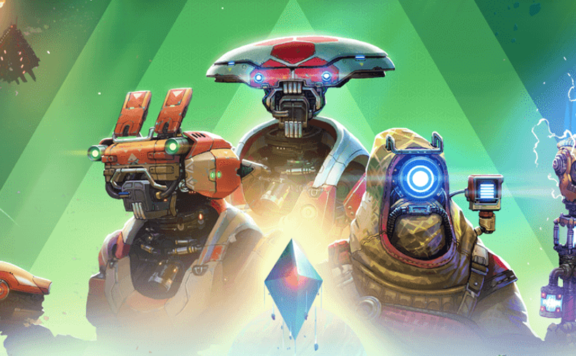After the huge media fallout from the pre-release hype of No Man’s Sky, it is perhaps no surprise that Hello Games’ follow-up title is a more low-key affair. Released with relatively little fanfare, The Last Campfire could hardly be more different than the interstellar adventures of its predecessor, concentrating as it does on an intimate and personal journey.
Rather than the spectacular over-promises of No Man’s Sky, The Last Campfire holds its cards very close to its chest. Enigmatic and mysterious, the emotional story dwells on ideas of loss and regret, before concluding with a message of hope and cooperation. Such a subject matter really resonated with me given the current climate of doom and gloom, and I found myself driven through the game’s 5 hour runtime by my desire to see Ember successfully complete their journey.
The specific nature of the storyline is left somewhat ambiguous, with the broad idea being that your little ember character has become lost and must try to find their way through darkness. There are analogies here with ideas of Limbo and the passage of the soul to some kind of afterlife but everything is left open enough that there isn’t a clear theological or religious inspiration. The main message, though, is clearly one of hope and triumph over adversity, albeit one that always remains focused on a smaller scale. I found this intimate aspect to be one of The Last Campfire’s greatest successes, as it allowed the game to breathe and affect me on an emotional level.

Graphically, The Last Campsite is distinctive, having a colourful pallete and lovely cartoony designs. It reminded me of the likes of A Short Hike, and certainly ticks the requisite indie aesthetic. More importantly, the emphasis is on clarity and the gaming experience, and this was reflected in the fact that I was never left wondering where to go next. That isn’t to say that the game was a walkover, but instead that there was a refreshing lack of any unnecessary backtracking or padding, and exploring the levels for hidden notes was an enjoyable part of the process.
Unfortunately, playing the game through the Epic store did mean that there were no achievements to inform me of whether I found everything which is something that Epic do still need to remedy. Obviously, this will be an experience shared by those playing on Nintendo Switch as well. I’m recovering from my worst trophy/achievement hunting excesses but do like to have a clear idea in-game as to whether I have missed things.
Music throughout the game is nice, and whilst nothing was overly memorable, it all felt perfectly suited to the action. Narration is provided through a distinctively Scandinavian sounding voiceover, which added an interesting level of folktale and legend to the developing story. The writing itself was good, with a charming and deft touch to the treatment of ideas of self-doubt and regret. It’s a small thing but I was struck by the deliberate choice to refer to Ember with the singular ‘they’ rather than attribute gender to the character. This worked well given the simplicity of the design and should open up the emotional potential of player involvement.

In terms of mechanics, The Last Campfire feels like an indie take on some of the more interesting environmental puzzles of the likes of The Legend of Zelda. In fact, the overall structure owes an unexpected debt to Link’s adventures. You explore the intimate levels in order to seek out ‘forlorns’ – embers that have lost all hope and turned to stone. Upon finding these you enter their imagination and solve a puzzle. The focus on small puzzles rather than sprawling dungeons reminded me of the Shrines in Breath of the Wild, whilst obviously aiming for a very different and more intimate tone.
As you progress through the game, these puzzles become more complex and involved, with some later ones proving an enjoyable challenge. The variations on block pushing and manipulation may not be massively original but perfectly suit the retro feel of the game as a whole. Midway through the game you find a lanthorn – a musical instrument that can be used to move certain objects and structures within the gameworld. This adds some welcome complexity to the puzzles across both the main world and the inner workings of the forlorn.

Alongside the Forlorn, you’ll find a few other characters in need of help. These range from a blinded repair robot to an insatiably hungry pig, with most playing an unexpected role in continuing the story. There are also some small sidequests which task you with finding particular items, with the rewards usually being more of the lost messages that form the main collectable. The completionist in me led to me doing all of these quests, as well as solving all of the ember’s puzzles, but I’m not sure whether you have to rescue everyone to finish the game.



